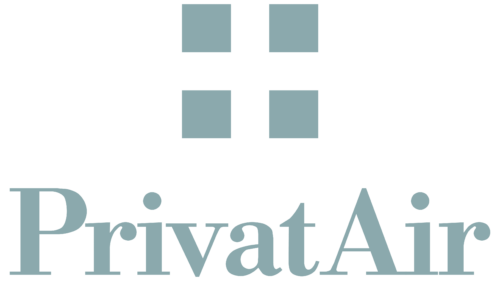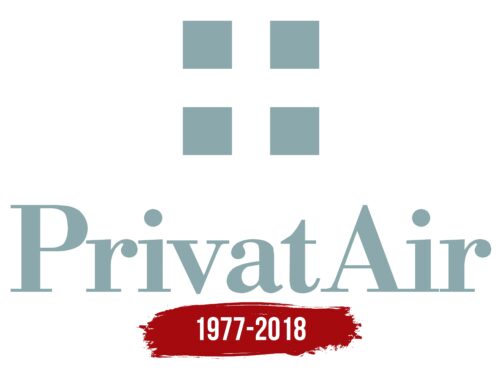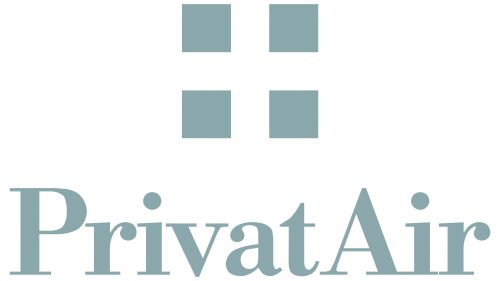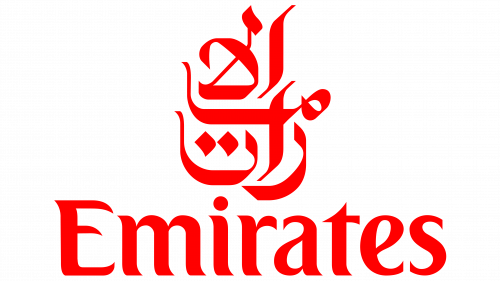The PrivatAir logo is barely visible against a white background. The brand’s aircraft are hidden from prying eyes, transparent like cut diamonds. The emblem shows a reliable separation of passengers on board to maintain privacy and comfort during travel.
PrivatAir: Brand overview
PrivatAir, a Swiss-based charter airline, was founded in 1977 by the wealthy Greek Latsis family, initially as a business aviation charter operator.
In the 1990s, PrivatAir evolved into a full-service airline offering VIP-configured aircraft for corporate and private charters worldwide. The airline positioned itself as a boutique provider of business-class services when it first introduced scheduled flights between Düsseldorf and Newark in 2001 on an ultra-long-range Boeing 767 aircraft.
In the decade that followed, PrivatAir operated long-haul premium flights for other airlines, including such respected airlines as Lufthansa and KLM. They operated unique routes, such as Düsseldorf to Tokyo, which further strengthened their niche.
However, the dynamic market conditions of the early 2010s led most major airlines to cancel their contracts with PrivatAir, preferring to invest in their services. The loss of contracts and the inability to attract new investments led to a reduction in PrivatAir’s operations.
In 2018, after operating for more than four decades, PrivatAir was forced to declare bankruptcy and cease operations. During its heyday in the 2000s, PrivatAir had a fleet of more than 15 aircraft, offering passengers premium services on corporate jets and unique scheduled routes around the world.
The collapse of PrivatAir clearly demonstrated the difficulties faced by independent premium airlines competing with the first-class products of major national carriers. The dynamics of industry development showed that it is quite difficult to maintain a niche model in the aviation sector.
Meaning and History
What is PrivatAir?
This Swiss airline and premium business jet operator is based in Geneva, specializing in providing luxurious and bespoke travel solutions for affluent individuals, corporations, and VIP clients worldwide. The company manages an exclusive fleet of modern business jets, including Bombardier Global, Gulfstream G650, and Boeing Business Jet aircraft, featuring spacious and elegantly designed cabins, advanced entertainment systems, and top-notch amenities to ensure unparalleled comfort and privacy during flights.
1977 – 2018
PrivatAir offers air transportation services using business class aircraft, so its logo needed to be formal and structured. The organized design reflected the company’s business orientation, even at the level of visual identity. The top half of the emblem consisted of four squares arranged in such a way that the empty space between them formed a cross. Under them, the name of the brand was written in a font with long, thin serifs, unusual cuts (at the letter “t”), and bold round dots at the ends (at the letters “r” and “a”). All elements were gray in color.
The four squares and the cross-shaped blank space symbolize precision and accuracy – qualities highly valued in aviation. The gray color scheme brings an element of sophistication and officialism, which corresponds to the services offered by the company. The characteristic typographic details add visual interest and give a somewhat modern twist to a largely traditional design.





